THE 20-21 COMEL AWARD FINALISTS
Fabrizio Pedrali
Brescia, ITALY
www.pedralifabrizio.it
www.pedralifabrizio.it
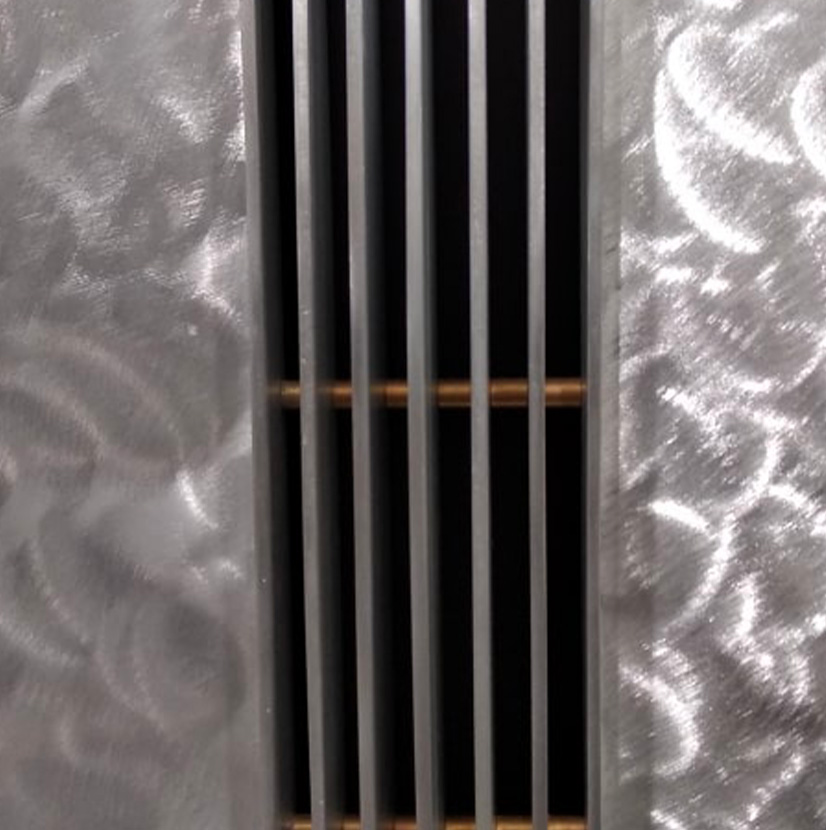
THE 20-21 COMEL AWARD FINALISTS
Fabrizio Pedrali
Brescia, ITALY
www.pedralifabrizio.it
www.pedralifabrizio.it
BIOGRAPHICAL NOTES
He took his first steps in the world of art in the mid-80s by attending a course for glass processing, he attended the “Aldo Kupfer” art school in the province of Brescia, where he perfected drawing, painting, sculpture and mosaic. His desire to experiment and his curiosity led Fabrizio Pedrali to measure himself with materials such as clay and plaster and then to deepen his knowledge and use of resins and compounds, marbles and stones with inserts in bronze, aluminium, iron and wood.
Since the very first moment, he abandons the figurative for the informal geometric, in his works he loves to create a game of movements in which the observer can follow his own experiential path. His works can be found in various public and private collections.
OPERA IN CONCORSO
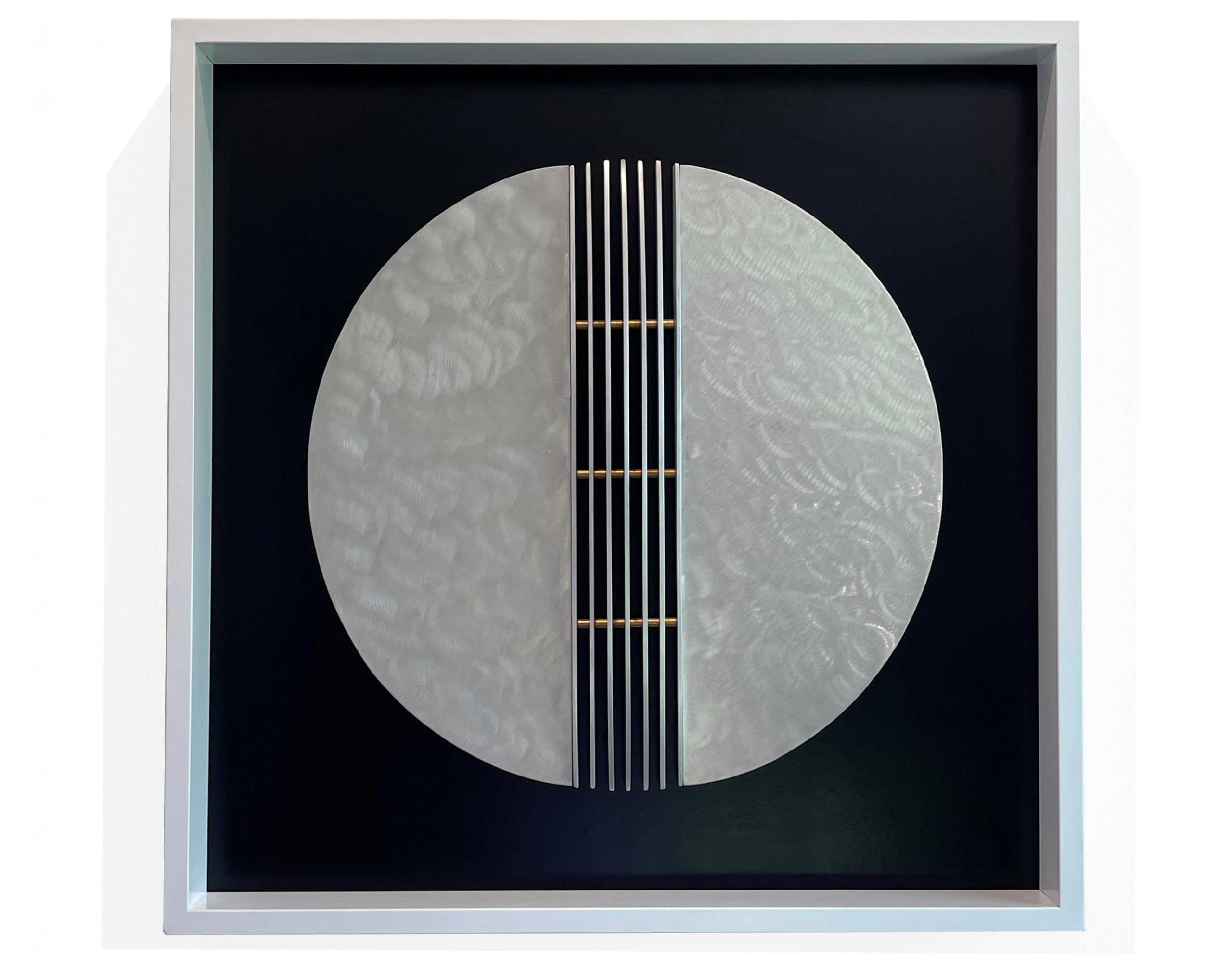
VENERE, 2020
SCULPTURE - satin aluminum, brushed aluminum, bronze inserts
cm 50 x 50 x 6
In Venere (Venus) by Fabrizio Pedrali the circular arrangement of a raised and convex shape is disturbed by a surface treatment that seems to allude to a “cloudy” space that softens and almost covers the brilliance of the metal. And yet a central slit, occupied by a regular and above all passable metal structure, opens up to a ulteriority of senses and warnings perceived on the threshold of mystery.
AWARDS
SPECIAL MENTION OF THE JURY 20-21
with the following motivation:
"A multiple symbolism characterizes the work in its elegant circular arrangement of shaded parts that are linked in the mysterious central slot."
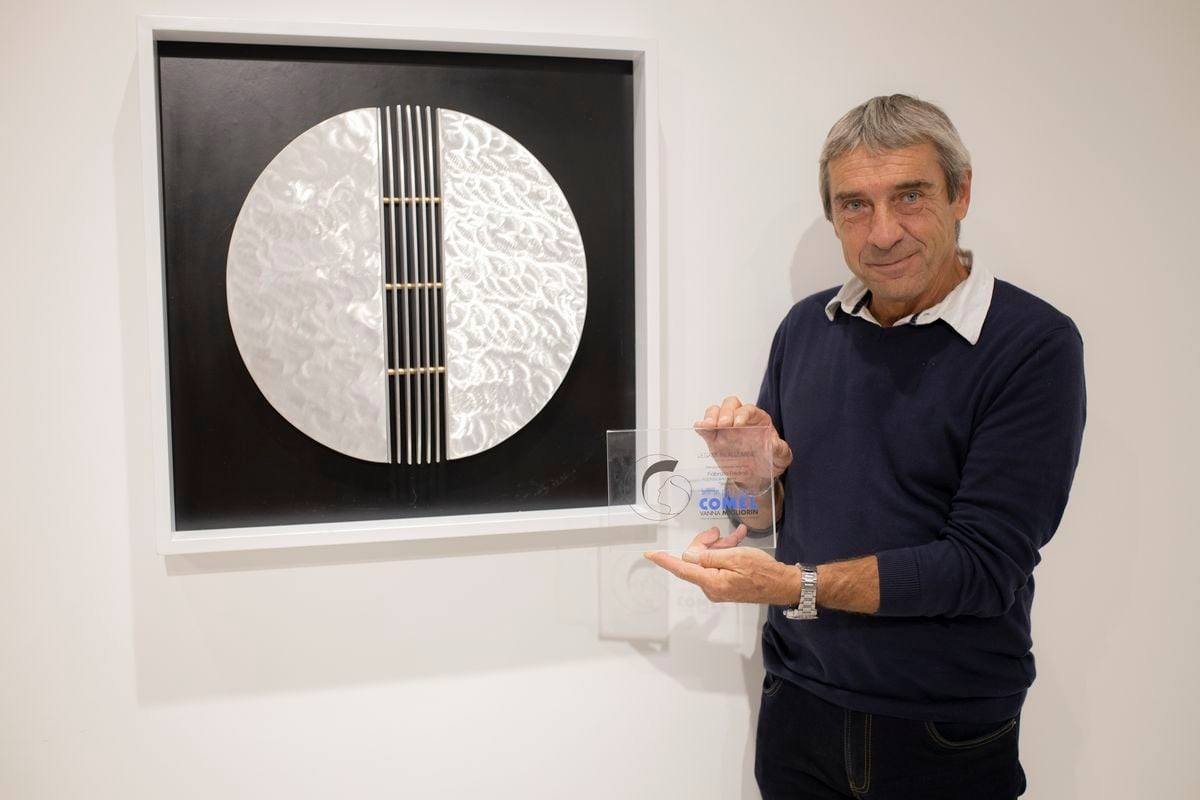
Interview by Ilaria Ferri
He took his first steps in the world of art in the mid-80s by attending a course for glass processing, he attended the “Aldo Kupfer” art school in the province of Brescia, where he perfected drawing, painting, sculpture and mosaic. His desire to experiment and his curiosity led Fabrizio Pedrali to measure himself with materials such as clay and plaster and then to deepen his knowledge and use of resins and compounds, marbles and stones with inserts in bronze, aluminium, iron and wood.
Since the very first moment, he abandons the figurative for the informal geometric, in his works he loves to create a game of movements in which the observer can follow his own experiential path. His works can be found in various public and private collections.
Many artists claim to have had a passion for art and creativity since childhood, you began self-studying art immediately after graduation and have never stopped learning and always improving your techniques. When did you understand that art had to be an important part of your life?
It is true, the passion for art and creativity is a gift that is present in all of us from an early age. Then it is up to us to set the goal we want to achieve and to choose the steps we want to take to get the results we dream of in life.
I realized that art was an important part of my life at the age of 21 after my military service, attending many courses, during which I started with glass fusions of furnishing objects and artistic stained glass, and then dedicated myself to sculpture that has always been a technique that fascinated me.
The art expert Francesco Chetta speaks of the "dynamism of formal plasticity" talking about your works, he defines your artistic path as an "extension of spatial-figurative" that makes you move away from the abstract-informal stylistic fashions widespread today. Beyond the definitions and artistic movements, what moves your artistic research?
Exactly! My artistic path is like "an extension of figurative spatiality", adding beyond spatial also the revaluation of kinetic art in motion. My artistic research is the desire to experiment with new solutions, and then share them.
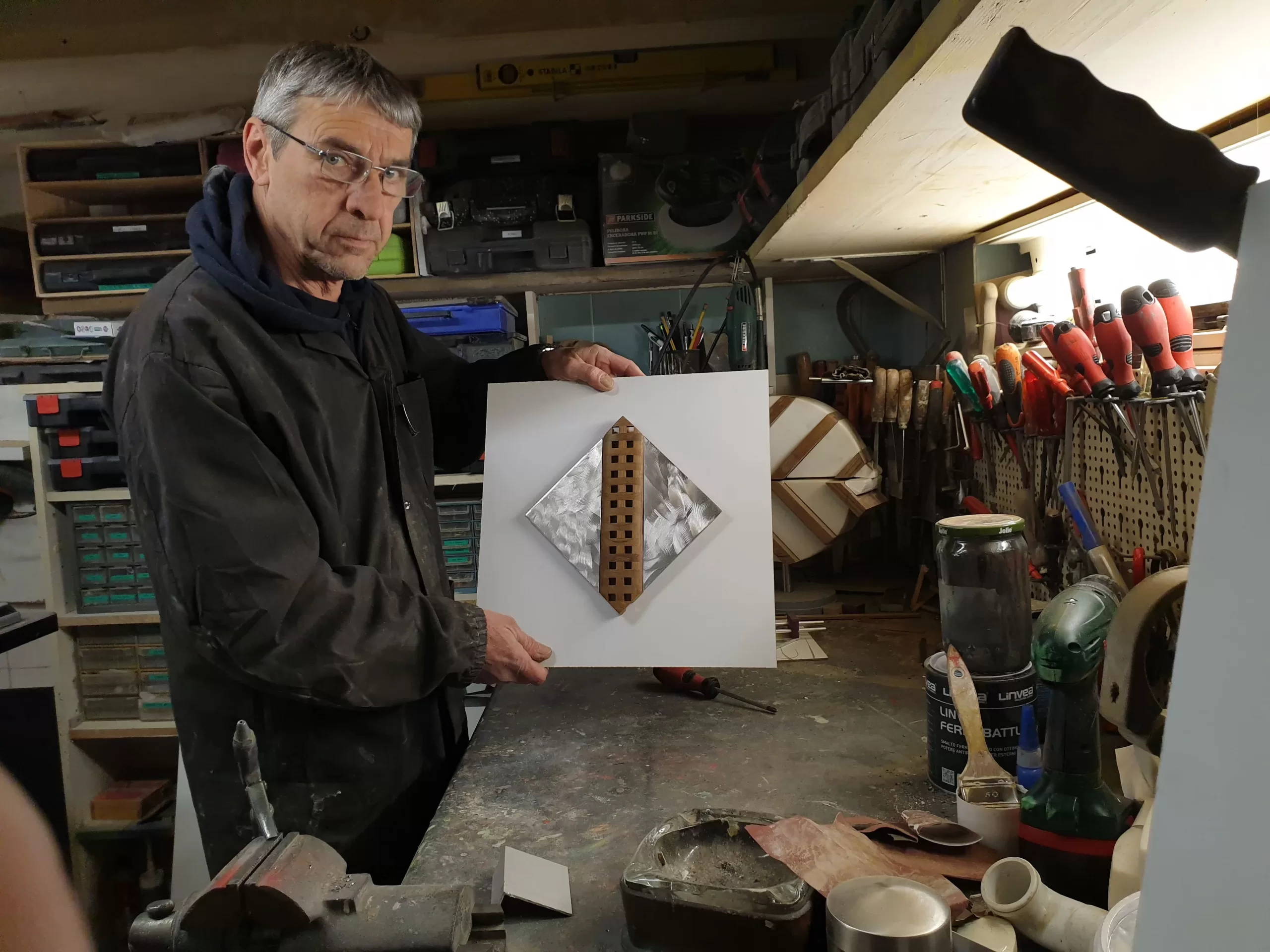
Fabrizio Pedrali in his workshop
The circle is a perfect geometric figure that recurs, together with the square, a little in all of your works. Over the centuries the circle and the sphere have been symbols of infinity, of the cyclical return, of harmony, of divinity, suggesting mysterious atmospheres that refer to other worlds or other dimensions. What does it mean for you? Why do you prefer this geometric figure?
It's true, the circle for me is the dynamic image of the transition between earth and sky, between the imperfect and the perfect, from the aspiration to a new balance, to a higher world. It expresses the desire to recreate a space around it where energy is recalled, linked to the universe and its energy dynamics.
Your works are characterized by geometric rigor, but in some of them, the movement breaks the lines and shapes that appear perfect at first sight, creating chaos and irregularities where there was previously perfection and harmony. One might think that through your works you are looking for a very specific order which, however, the case upsets. Is it a kind of metaphor for Life?
Yes, it is a metaphor, because life is like a journey and as such, it always has a false start with birth. We think that from that moment our beautiful and carefree journey begins, but then we encounter obstacles and struggle to reach our dreams, our goals, and to become wiser.
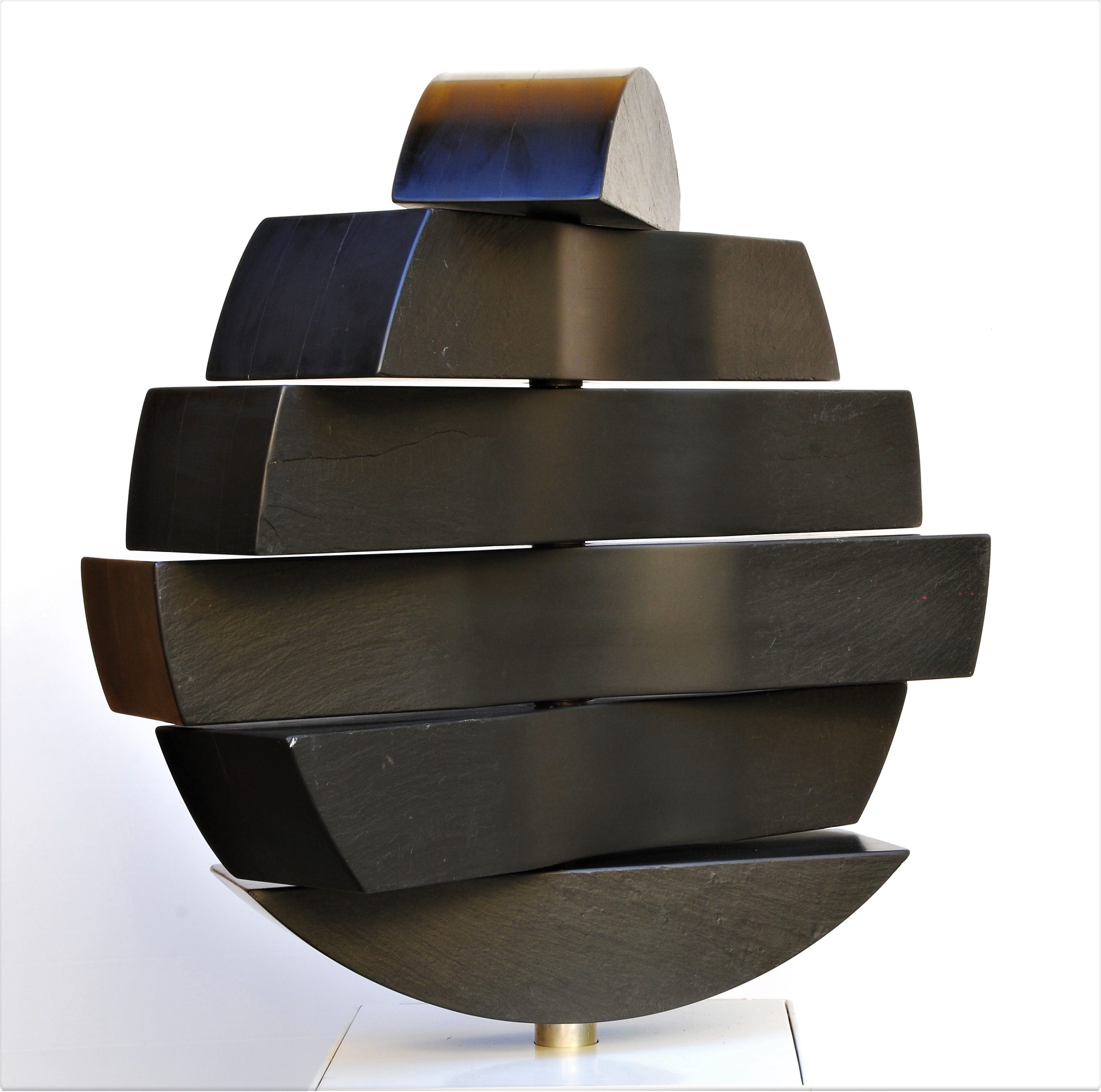
Universo, 2010
In your works, the essential forms, the monochromatism, the harmonies, the geometric rigor are enriched by the movement of the elements that compose them. As stated by art critic and historian Sabrina Falzone "the interactive use of the volumes making up his sculptures represents an added value to the original conception of the work itself, which arises not only between conceptual synthesis, material balance, and aesthetic harmony, but also between the solemnity of geometric rigor and the energetic freedom of dynamism ". This dynamism is like a hand extended to the observer who can continue the story that you began with your work. How important is interaction with the public for you?
I consider interaction with the public to be essential. Since most of my works are not static, the user has access to the work itself.
Moving it, the observer can perceive the warmth of the woods, the cold of the marbles and stones. The interesting thing is that each person has a personal story, and this enriches me internally by creating a mutual exchange of sensations and emotions between me and the observers.
You have always worked with materials such as marble, stone, wood and metals and in recent years you have started using aluminium. How did the encounter with this metal happen?
I am always looking for and experimenting with new materials.
The encounter with aluminium took place precisely by participating in the COMEL Award, stimulating me to work with this metal that I had not yet taken into consideration for my works.
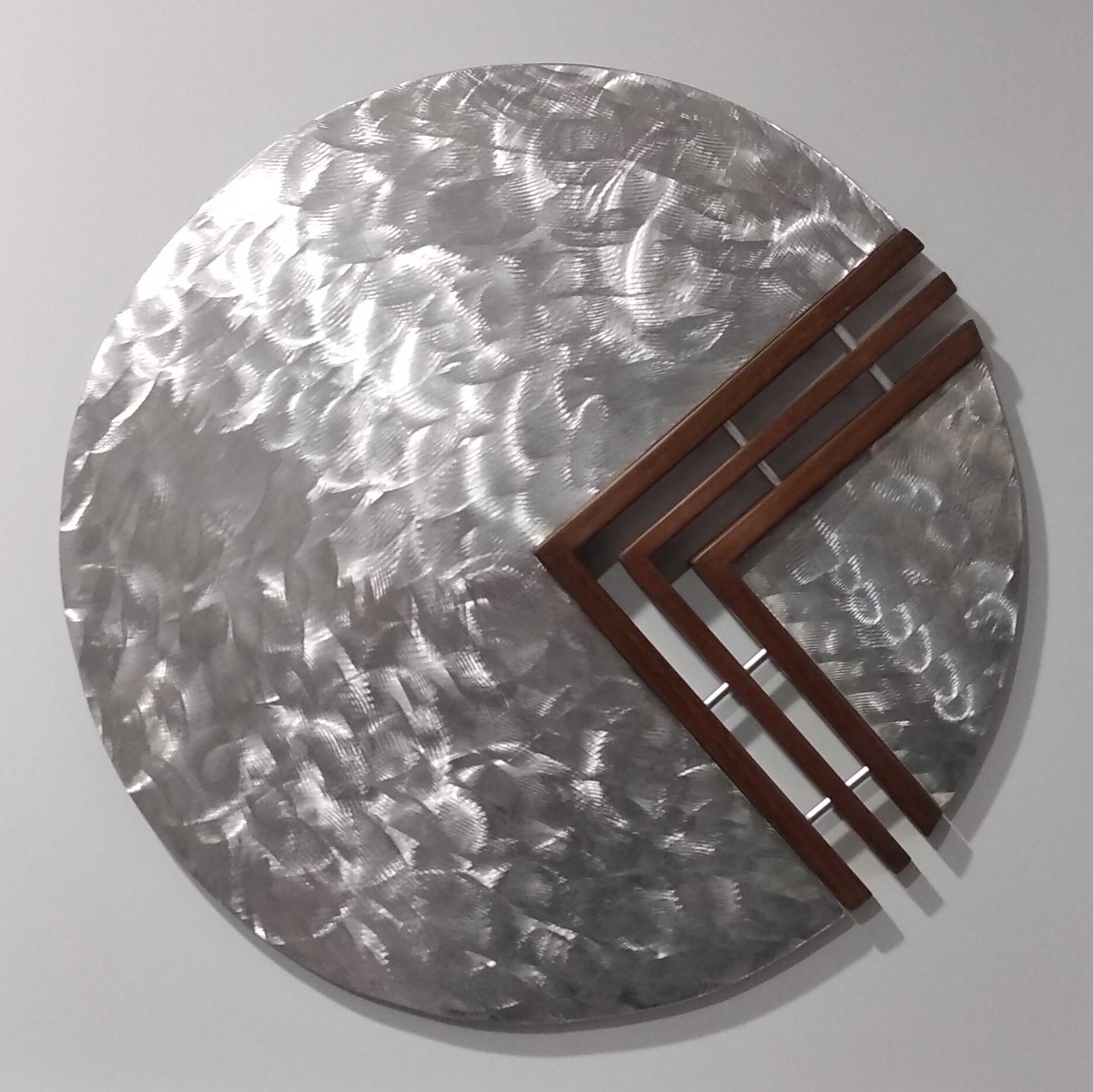
ALFA 2, 2021
You participated in the eighth edition of the COMEL award with the artwork Venere, your work on aluminium has given an incredible brightness and depth to the artwork so as to deserve a special mention by the jury, how this work was born, and the decision to register for the Award? how was this experience for you?
The work Venere (Venus) is part of my artistic career as an astronomy enthusiast.
Venus is the brightest and shiniest planet in the sky, on which a day lasts more than a year. I think that people would appreciate this cycle of life on Earth.
The experience with the COMEL Award was commendable, the competition gave me the opportunity to find a wonderful gallery, excellent organization, and a wonderful welcome from all the people.
In addition, the cultural exchange with other artists is always an enrichment for the continuation of my artistic activity.

